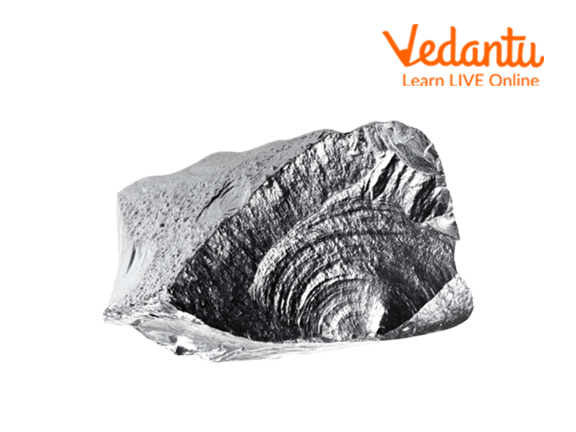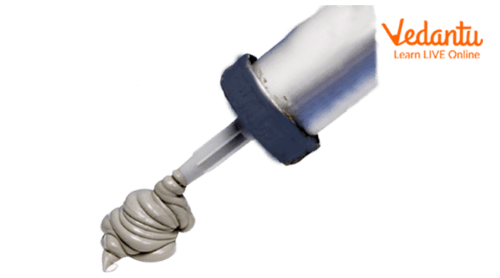




Why Is Silicon Important in Science and Daily Life?
The computer you are using to see these sentences is made of silicon, which is something to be grateful for. Silica, an oxide of silicon, is the most prevalent component of sand and is an integral part of microelectronics and computer chips. It also contributes to pleasant, white beaches.
According to the Royal Society of Chemistry, silicon is the second most plentiful element in the world after oxygen and the seventh most abundant element in the cosmos. Silicon makes up about 25% of the Earth's crust. In addition to being used in computer chips, silicone is used in various odd applications, such as menstrual cups, breast implants, and oven mitts. Let’s read more about silicon!
Characteristics and Properties of Silicon
The characteristics and properties of silicon are as follows:
In its crystallised form, silicon is an extremely brittle, hard, and generally inert metalloid with a distinct metallic sheen.
In nature, silicon mostly appears as oxides and silicates.
Oxygen, water, and most acids do not react with silicon in its solid form.
With halogens or weak alkalis, silicon reacts.
In addition, silicon has the unusual quality of expanding as it freezes, just like water.
In addition, four additional elements—gallium, bismuth, antimony, and germanium—expand when they are frozen.
Physical Properties of Silicon
The physical properties of silicon are as follows:
Pure silicon is a solid that is a hard, dark grey colour.
It exists in the solid phase.
Metallic sheen or glow known as lustre.
Silicon exists in two different allotropic states: a brown amorphous state and a dark crystalline state.
Alkalis and hydrofluoric acid are both soluble in silicon.

Silicon the Chemical Element
Silicon Element Uses
The uses of the silicon element are as follows:
Among the most beneficial components to humanity is silicon. The majority is used to create alloys, such as ferrosilicon and aluminium-silicon alloys (iron-silicon). These are used to deoxidise steel and to create machine tools, engine blocks, cylinder heads, and plates for dynamos and transformers.
Silicones are also produced using silicon. These are methyl group-attached silicon-oxygen polymers. Some products and hair conditioners contain silicone oil, a lubricant. Bathrooms and the areas surrounding windows, pipes, and roofs are sealed with silicone rubber to keep water out.
In the computers and microsystems industries, silicon is widely employed as a semiconductor in solid-state devices. Hyperpure silicon is required for this. To regulate its electrical characteristics, silicon is doped selectively with minute quantities of boron, gallium, phosphorus, or arsenic.
Complex silicates like granite and the majority of other rocks are utilised in civil engineering projects. Concrete and cement are made from sand (silicon dioxide or silica) and clay (aluminium silicate). Glass, which has countless uses, also primarily consists of sand. Ceramics used in high temperatures, enamels, and pottery all include silicon in the form of silicate.
Important abrasives known as silicon carbides are also utilised in lasers.

Silicones Made of Silicon
Facts About Silicon
Now, let’s learn some interesting facts about silicon:
1) The Latin word "silex," which means flint or a hard stone, is where silicon gets its name. Early in the nineteenth century, the element's name was changed from "silicium" to "silicon" to better align it with carbon and boron elements.
2) Silicon and silicone are not the same things, despite what some people may believe. A found natural element, silicon is listed as element 14 on the chemical elements. A multitude of uses utilise silicon, a synthetic material consisting of silicon-oxygen polymers.
3) Diamond, which is formed of carbon, the element that lies above silicon in the periodic table, has the same crystal structure as pure silicon.
4) Silicon is a grey and shiny solid when it is ultrapure. Silicon is a metalloid, despite having the appearance of a metal, and only conducts electricity under specific circumstances, making it a good choice for the electronics sector.
5) The second-most plentiful element in the earth's crust is silicon. The most prevalent substance in the earth's crust is silicon dioxide (SiO2), composed of silica.
Summary
In this article, we learned that silicon is a chemical element with the atomic number 14 and the non- to semi-metallic chemical symbol Si. It never occurs free but is present in practically all rocks, sand, clay, and soils in combination with oxygen in silica (silicon dioxide, SiO2) or even with oxygen and metal as silicate minerals. It is second to only oxygen in abundance in the Earth's crust. Many plants and even animals experience it.
We also learned that pure silicon has the same crystalline structure as diamond and is a hard, dark grey solid with a metallic lustre. With this, let’s wrap up the article about silicon element. We discussed almost everything about silicon, like its characteristics, properties, facts and so on.
FAQs on Silicon: Essential Facts Every Student Should Know
1. What is silicon most famous for?
Silicon is most famous for its role as a semiconductor, which is the foundational material for modern electronics. This property allows it to control the flow of electric current, making it essential for manufacturing computer chips, transistors, and solar cells. It is the element that powers the "Silicon Valley" tech industry.
2. What are the main uses of silicon?
Silicon has a wide range of applications due to its unique properties. Its main uses include:
- Electronics: As a semiconductor in microchips, transistors, and rectifiers.
- Solar Energy: In photovoltaic cells to convert sunlight into electricity.
- Construction: As silica in sand and clay to make concrete and bricks.
- Glassmaking: Fused with other elements to produce glass for windows, containers, and insulation.
- Alloys: Used to create alloys like ferrosilicon for strengthening steel.
- Polymers: As the base for silicones, which are used in sealants, lubricants, and medical implants.
3. Where is silicon found in nature?
Silicon is not found freely in nature as a pure element. It is almost always combined with oxygen to form silicon dioxide (SiO₂), commonly known as silica. Silica is the main component of sand, quartz, and flint. Silicon also occurs in silicate minerals, which make up over 90% of the Earth's crust.
4. How is silicon's position on the periodic table related to its properties?
Silicon (Si) is in Group 14 and Period 3 of the periodic table. Its position explains its key properties:
- Group 14: Like carbon above it, it has four valence electrons, allowing it to form four strong covalent bonds. This is crucial for creating stable crystal lattice structures.
- Metalloid: It sits on the border between metals and non-metals, which explains its semiconductor properties—it conducts electricity better than an insulator but not as well as a pure metal.
5. Is silicon the most common element on Earth?
No, but it is the second most abundant element in the Earth's crust by mass, after oxygen. Oxygen makes up about 46% of the crust, while silicon accounts for about 28%. Together, they form silicate minerals, which are the primary constituents of most rocks and soil.
6. What is the difference between silicon and silicone?
This is a common point of confusion. Silicon (Si) is a naturally occurring chemical element, a hard and brittle crystalline solid. Silicone, on the other hand, is a synthetic polymer (a large, chain-like molecule) made from silicon, oxygen, and other elements like carbon and hydrogen. Silicones are flexible, rubber-like materials used in sealants, cookware, and medical applications.
7. Why is silicon so important for computers and electronics?
Silicon's importance comes from its properties as a semiconductor. Pure silicon does not conduct electricity well. However, through a process called doping, where tiny amounts of other elements are added, its conductivity can be precisely controlled. This allows engineers to create millions of microscopic on/off switches, called transistors, on a single silicon chip. These transistors are the building blocks of all modern digital electronics.
8. Can life be based on silicon instead of carbon?
While theoretically interesting, silicon-based life is considered unlikely. Like carbon, silicon can form four bonds, suggesting it could create complex molecules. However, silicon bonds are weaker than carbon bonds, and its oxide, silicon dioxide (SiO₂), is a solid (sand) at room temperature, not a gas like carbon dioxide. This would make it very difficult for a silicon-based organism to manage energy and expel waste, a critical function in carbon-based life.





















